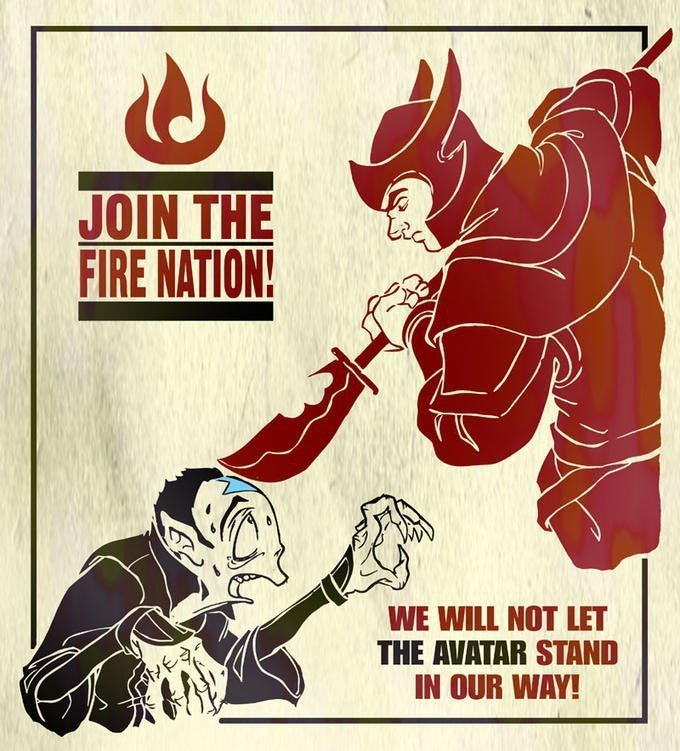
The Avatar is like the Dalai Lama, a continuously reincarnated person who is meant to bring peace to the four nations of the world (the Air Nomads, the Water Tribe, the Earth Kingdom, and the Fire Nation). Aang is a twelve-year old boy who has been deemed the “Avatar,” and is hence the namesake of the series, Avatar: The Last Airbender. We first learn about Prince Zuko as he is hunting down the protagonist of the story, Aang.
Through the relationship between nephew and uncle, Prince Zuko gradually comes to internalize his uncle’s guidance and face his inner demons, demonstrating an analytic process of transference, resistance, and working through his conflicts. Zuko’s Uncle Iroh demonstrates a psychoanalytic posture with Zuko, refraining from passing judgment while Zuko rejects his uncle’s guidance and projects his conflicts onto Uncle Iroh. They watch him fight the same inner battles over and over in a colossal repetition compulsion.

As the viewers come to know Prince Zuko, they learn about the internal, unconscious conflicts that bedevil him. In the series, the primary lessons in psychoanalysis reside in the relationship between the antagonist, the young and impetuous Prince Zuko, and his uncle, the staid but clever Uncle Iroh. More surprisingly, it presents the audience with an unexpected level of character development, revealing a psychoanalytic process of unconscious conflict, repetition, and emotional resolution through relationship. The series wonderfully combines elements of Chinese martial arts such as kung fu and tai chi, which provide the action and excitement, with Tibetan Buddhist philosophy. “It’s time for you to look inward, and begin asking yourself the big questions: who are you, and what do you want?” It’s not exactly the stuff of your average American cartoon program, but this quote captures the essence of Avatar: The Last Airbender, an animated TV series aimed at 6-to-11 year olds that aired on Nickelodeon from 2005 to 2008.


 0 kommentar(er)
0 kommentar(er)
